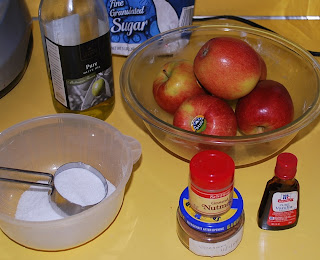Today was a day off from work at the office. I tried doing homework - my take-home laptop had a new security system installed, now I can't get into it. So plan B, I was using my own laptop, but the cord developed a short and now needs replacing. So plan C, my old desk top. Slow - now a bit faster.
So, took the pile of prunings to the Recycling center. Here is the pile at about 1/4 its final size - I didn't take a photo today. It towered over the truck. I had tried grinding them in my brush chopper - it clogs up over and over, big hassle. I tried running them through the lawnmower - too much work. So, into the truck and off to H&H recycling.

Normally, I don't let the yard get so out of hand, but last year was intense. Things grew out of control. Much of this was lavender and rosemary, roses, ivy and blackberry vines. Also a big pile of lilac prunings that I never got around to chopping, from last summer. The ivy and blackberries are the curse of invasive exotics. The pile smelled really good due to the massive pile of herbs. Rosemary and lavender continue growing through the summer, even without watering, and over the past several years have become huge bushes. Plus, I had let volunteers grow, but they have degraded, drab flower quality even though the foliage is aromatic. So a lot of those got pulled up, and all were pruned back severely.
To make the trip worthwhile, I bought a truckload of yard-waste compost - which I was going to do anyway. That makes the trip about zero carbon balance-wize for the prunings.
I cleaned up the back yard rose & fruit raised bed. Raked out old top-layer which contained leaves, some bark mulch, and some weeds and prunings. Weeds to the chickens. The rest, to low spots in other beds, to be covered over later. Then a nice layer of steamy, black, earthy-smelling compost.
If the cat doesnt use this as the world's largest litter box, that should do it for the year. A big if - depends on what she takes a shine to. It would be OK, but she stirs up the material under the mulch, mixing it together, and the exposed weed seeds sprout and grow rampantly. If she does, then it may get another layer of something. Not sure what yet - chopped straw is a strong possibility, but only after rainy season is over.
I like the appearance of a garden bed, when it's all cleaned up, pruned, weeded, and has a fresh layer of compost mulch. It looks so "ready" for the year. Now it's pouring rain, mid 50s. That will settle the mulch nicely.
I trimmed some of the center growth from the fig trees. Not much, but enough to keep them open. Took the tallest branch from petite negri, to keep it low and open. Not sure yet how much freeze damage they have. Some tip buds look dead, but pruned branches have nice green cambium.
 The wine barrel container gardens are growing nicely. I do think they got a head start due to coveirng with plastic. Now I'm leaving them uncovered, except for some chicken wire to discourage birds.
The wine barrel container gardens are growing nicely. I do think they got a head start due to coveirng with plastic. Now I'm leaving them uncovered, except for some chicken wire to discourage birds.  Everything has sprouted, with the exception of the old chinese celery and the onion seeds. Maybe they just need a little more time. The seeds that have sprouted and are growing actively are spinach, chinese radish, radish, brassica mesclun, lettuces, and cilantro. I don't know if they will give edibles in the claimed 20 to 30 days, since it's chilly. Still, very encouraging.
Everything has sprouted, with the exception of the old chinese celery and the onion seeds. Maybe they just need a little more time. The seeds that have sprouted and are growing actively are spinach, chinese radish, radish, brassica mesclun, lettuces, and cilantro. I don't know if they will give edibles in the claimed 20 to 30 days, since it's chilly. Still, very encouraging.

























